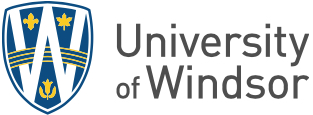 Biology students look on as teaching assistant Paul Bahnam conducts a tour through the human body.
Biology students look on as teaching assistant Paul Bahnam conducts a tour through the human body.
UWindsor undergraduates are offered an uncommon opportunity to view, touch, and learn from real human cadavers at the Schulich School of Medicine & Dentistry – Windsor Campus.
Each semester, Human Anatomy course instructor and laboratory demonstrator Sara McNorton takes students enrolled in the second-year course to the medical school for a hands-on tour.
“Most universities don’t have access to a medical school, so this is a unique opportunity for undergraduates to visually and physically examine muscles, organs, and blood vessels on a human specimen,” she says. “It really puts the human in Human Anatomy.”
Charlotte Sivitter graduated with a bachelor of human kinetics in May 2017, and returned this semester to take physiotherapy school prerequisites.
“I work in a physiotherapy clinic and this was a great opportunity to get a good look without hurting anybody. It is like putting a face to the name, you are putting the muscle to the injury,” says Sivitter.
“To come in here and actually see the muscles that patients may have injured, and to see the nerves and be able to visualize what is happening beneath the skin is incredibly valuable.”
Joining the tour is optional for students and has been offered since the medical school opened in Windsor. On the most recent tour, McNorton showed students a half head as well as a brain intact with its spinal cord. She was assisted by two students: doctoral candidate Kyle Stokes, who demonstrated human limbs, and fourth-year biology major Paul Bahnam, who led a learning station with a full cadaver.
Bahnam took the course in his second year. Now a teaching assistant, he says the bodies are donated specifically to the medical school for this kind of learning opportunity, and students are respectful of that.
“Today I talked about gallstones, and then students got to see and feel what a gallbladder with gallstones was like; I also showed them two lungs and asked them to tell me which one was cancerous and which one was not — and they always get it right,” he says.
“This is a good teaching tool that allows students to question things and come up with their own solution. Since we would generally work on other specimens in the lab, this gives the students a much better perspective of human anatomy.”
Princess Vergara, a third-year behaviour, cognition and neuroscience major, says it was an invaluable lesson.
“This was a surreal experience but I took full advantage because I wasn’t sure when I would get another opportunity like it,” says Vergara. “Some organs were squishy but the bone felt hard. I just think I would not be able to learn about human anatomy nearly as well without getting this live demonstration.”
McNorton says the course is usually fully subscribed and around 230 students each year will get to participate in the tour if they so choose.
See more photos from the cadaver lab tour on the Faculty of Science Facebook page.
